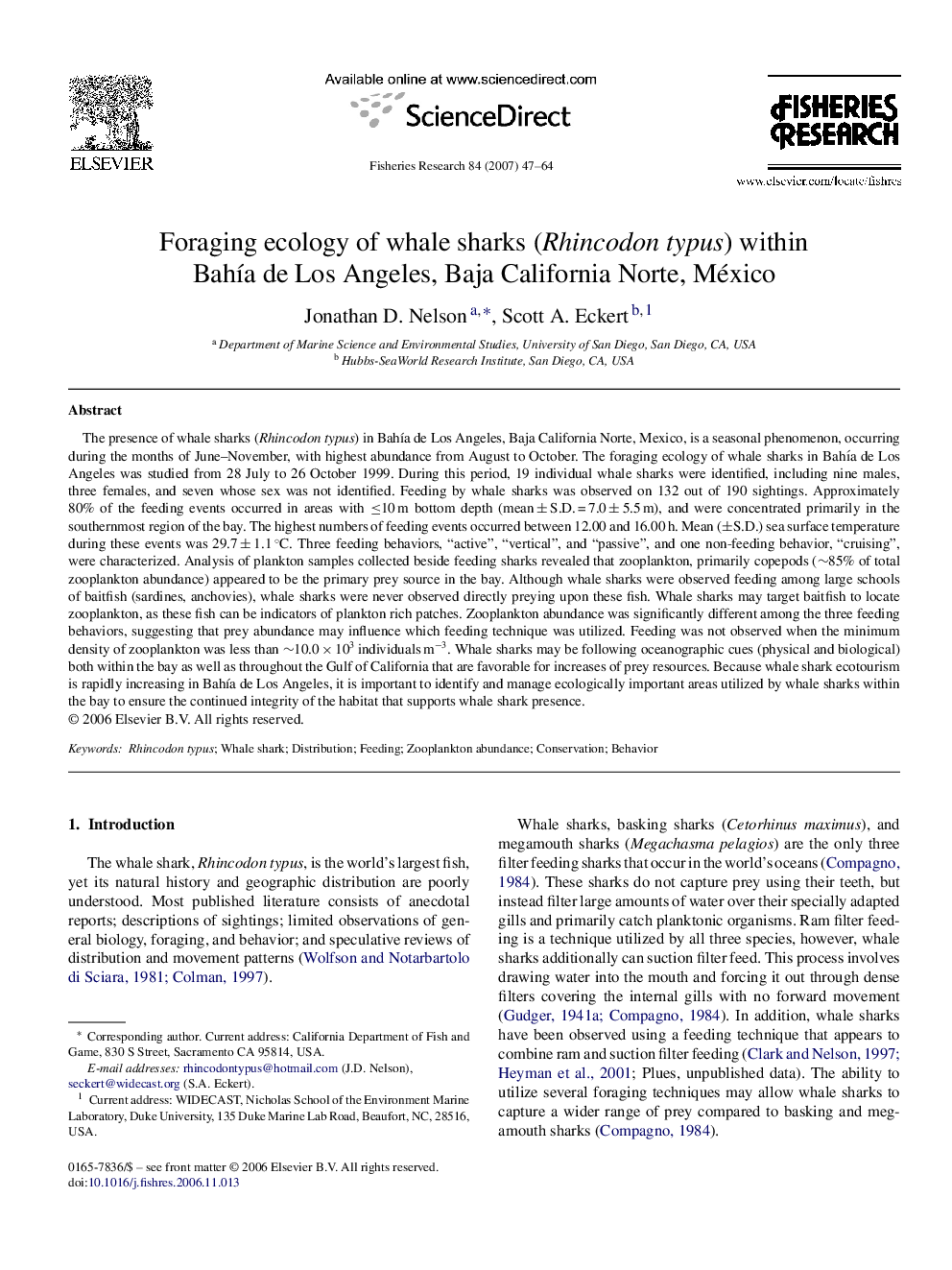| Article ID | Journal | Published Year | Pages | File Type |
|---|---|---|---|---|
| 4544804 | Fisheries Research | 2007 | 18 Pages |
The presence of whale sharks (Rhincodon typus) in Bahía de Los Angeles, Baja California Norte, Mexico, is a seasonal phenomenon, occurring during the months of June–November, with highest abundance from August to October. The foraging ecology of whale sharks in Bahía de Los Angeles was studied from 28 July to 26 October 1999. During this period, 19 individual whale sharks were identified, including nine males, three females, and seven whose sex was not identified. Feeding by whale sharks was observed on 132 out of 190 sightings. Approximately 80% of the feeding events occurred in areas with ≤10 m bottom depth (mean ± S.D. = 7.0 ± 5.5 m), and were concentrated primarily in the southernmost region of the bay. The highest numbers of feeding events occurred between 12.00 and 16.00 h. Mean (±S.D.) sea surface temperature during these events was 29.7 ± 1.1 °C. Three feeding behaviors, “active”, “vertical”, and “passive”, and one non-feeding behavior, “cruising”, were characterized. Analysis of plankton samples collected beside feeding sharks revealed that zooplankton, primarily copepods (∼85% of total zooplankton abundance) appeared to be the primary prey source in the bay. Although whale sharks were observed feeding among large schools of baitfish (sardines, anchovies), whale sharks were never observed directly preying upon these fish. Whale sharks may target baitfish to locate zooplankton, as these fish can be indicators of plankton rich patches. Zooplankton abundance was significantly different among the three feeding behaviors, suggesting that prey abundance may influence which feeding technique was utilized. Feeding was not observed when the minimum density of zooplankton was less than ∼10.0 × 103 individuals m−3. Whale sharks may be following oceanographic cues (physical and biological) both within the bay as well as throughout the Gulf of California that are favorable for increases of prey resources. Because whale shark ecotourism is rapidly increasing in Bahía de Los Angeles, it is important to identify and manage ecologically important areas utilized by whale sharks within the bay to ensure the continued integrity of the habitat that supports whale shark presence.
